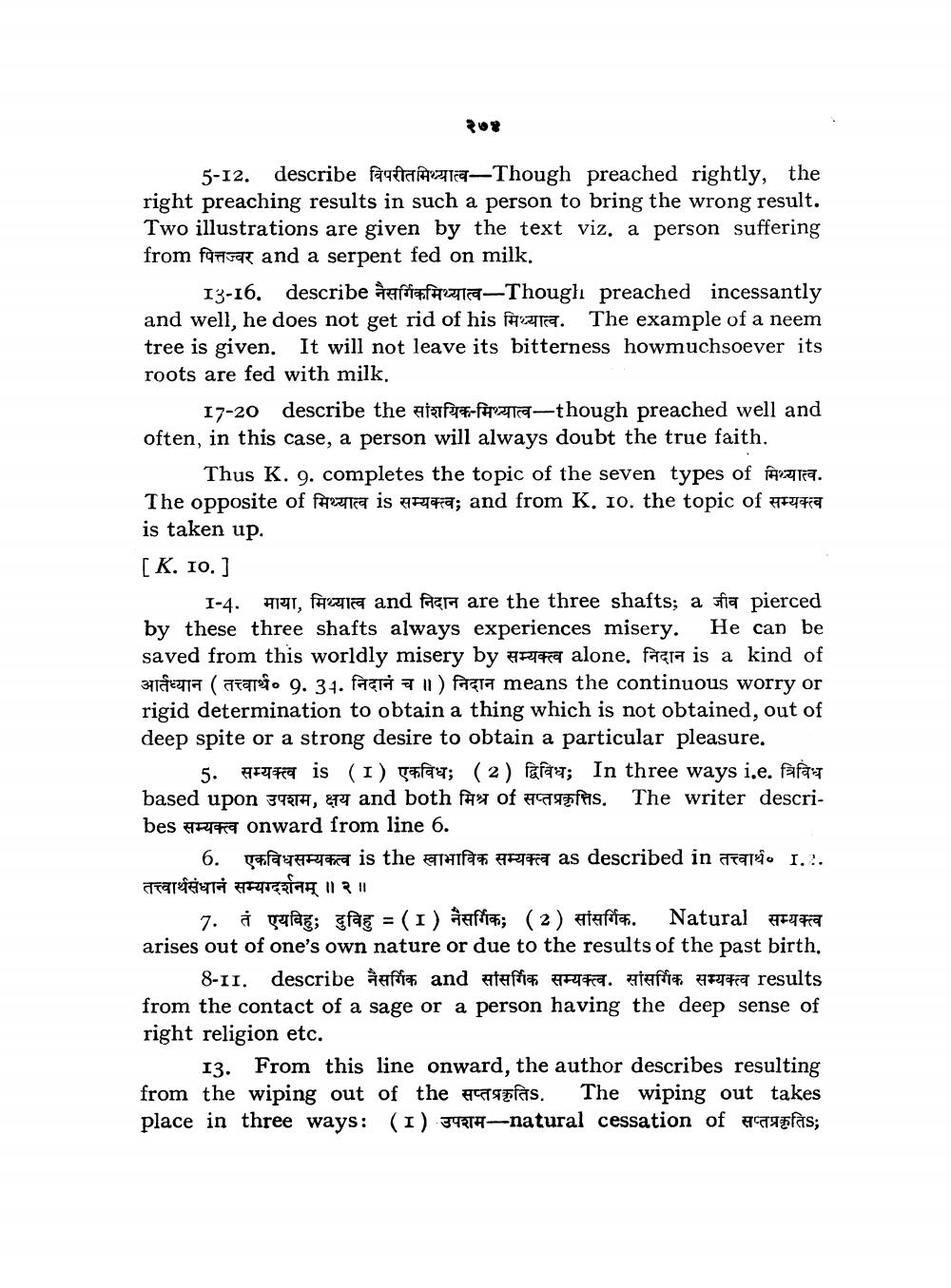________________
5-12. describe fattawa -Though preached rightly, the right preaching results in such a person to bring the wrong result. Two illustrations are given by the text viz. a person suffering from fariga and a serpent fed on milk.
13-16. describe erfafz-Though preached incessantly and well, he does not get rid of his far. The example of a neem tree is given. It will not leave its bitterness howmuchsoever its roots are fed with milk. 17-20 describe the staff-
f21a-though preached well and often, in this case, a person will always doubt the true faith.
Thus K. 9. completes the topic of the seven types of Azka. The opposite of मिथ्यात्व is सम्यक्त्व; and from K. I0. the topic of सम्यक्त्व is taken up. [K. 10.)
1-4. माया, मिथ्यात्व and निदान are the three shafts; a जीव pierced by these three shafts always experiences misery. He can be saved from this worldly misery by Epica alone. facra is a kind of 31 degia ( atareio 9. 34. facri all) facra means the continuous worry or rigid determination to obtain a thing which is not obtained, out of deep spite or a strong desire to obtain a particular pleasure.
5. सम्यक्त्व is (I) एकविध; (2) द्विविध; In three ways i.e. विविध based upon उपशम, क्षय and both मिश्र of सप्तप्रकृत्तिs. The writer describes ra onward from line 6.
6. एकविधसम्यकत्व is the स्वाभाविक सम्यक्त्व as described in तत्त्वार्थ. I... तत्त्वार्थसंधानं सम्यग्दर्शनम् ॥२॥
7. pufag; gfag = (1) Qaffia; (2) atafile. Natural ha arises out of one's own nature or due to the results of the past birth.
8-II. describe नैसर्गिक and सांसर्गिक सम्यक्त्व. सांसर्गिक सम्यक्त्व results from the contact of a sage or a person having the deep sense of right religion etc.
13. From this line onward, the author describes resulting from the wiping out of the fas. The wiping out takes place in three ways: (1) 34TH-natural cessation of aqualas;




